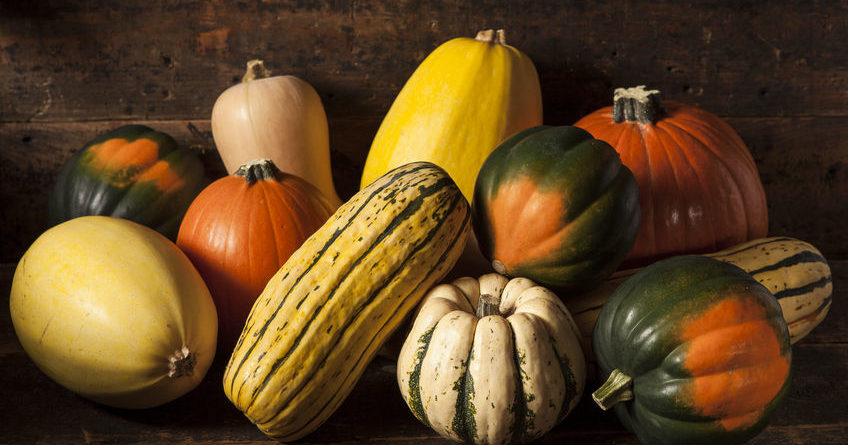Written By Julie Paiva, CHHC
Squash is often an unexplored food choice by many. People seem to be intimidated by its appearance and unsure of what to do with it. But actually it is quite easy to prepare and can add a wonderful new dimension of taste and texture to any meal. Be bold, be brave, and venture into the squash world. You will leave grateful that you did.
Types of Squash
Squash is a part of a very interesting vegetable group of which there are dozens of varieties. This group also contains gourds, which are inedible but commonly used as fall decorations. It is a warm weather crop harvested and readily available between August and December, although many varieties can be found all year round. In the United States, squash is split into two categories: summer and winter. Summer squash include the smaller, less mature varieties that have thin, edible skin such as crookneck and zucchini. Winter squash, on the other hand, includes the larger, more mature varieties. This category gets it name because of their hard exteriors that make them suitable for storing through the winter. Some of the more common winter squashes include spaghetti squash, acorn squash, butternut squash, and pumpkins.
Tips for Cooking Squash
When selecting summer squash, pick those that are small (~4-6 oz each) and blemish-free. They are freshest when stored in the refrigerator in a plastic bag for no more than 5 days. Because of their edible skin and tender flesh, they are perfect for stir-fry dishes, casseroles, and soups.
For winter squash, look for those that are heavy for their size with hard, tough skin. The heavier it is usually means the more edible flesh there will be. Store them in a cool, dark place. Their tough exterior and firm interior make them perfect for storing for many weeks without refrigeration. Winter squash has a creamy texture, nutty flavor and a hint of sweetness. You can bake, steam or roast them to soften their firm flesh. Try it with a touch of fall flavors like cinnamon, nutmeg and maple syrup to leave your home smelling delicious, your stomach satisfied, and your taste buds thankful.
Health Benefits of Squash
Besides the varieties, versatility and delicious flavor of squash, another great thing about it is its nutrient content. Squash has truly impressive amounts of vitamin A with more than 457% of the daily value per serving. Vitamin A is a powerful antioxidant and is essential for skin, vison and mucus membranes. Squash also packs in the vitamin C with over 42% of the daily value which provides a boost to your immune system. Important minerals such as potassium and magnesium can be found in this fall food as well with about 18% of your daily value of each. The list of health health benefits goes on. Read more here.
Recipes
So the next time you are at the market, think beyond just purchasing squash for your fall center piece, and bring it into the kitchen as a great addition to your meal. Try out one of our fabulous recipes below:
Maple Roasted Butternut Squash
Spiced Pumpkin and Butternut Squash Soup
Grilled Halibut Fillet Cacciatore
Spaghetti Squash and Meatballs
Acorn Squash and Sweet Potato Chili
Sun-Dried Tomato, Pistachio, and Zucchini Pasta
Bon Appetit!




